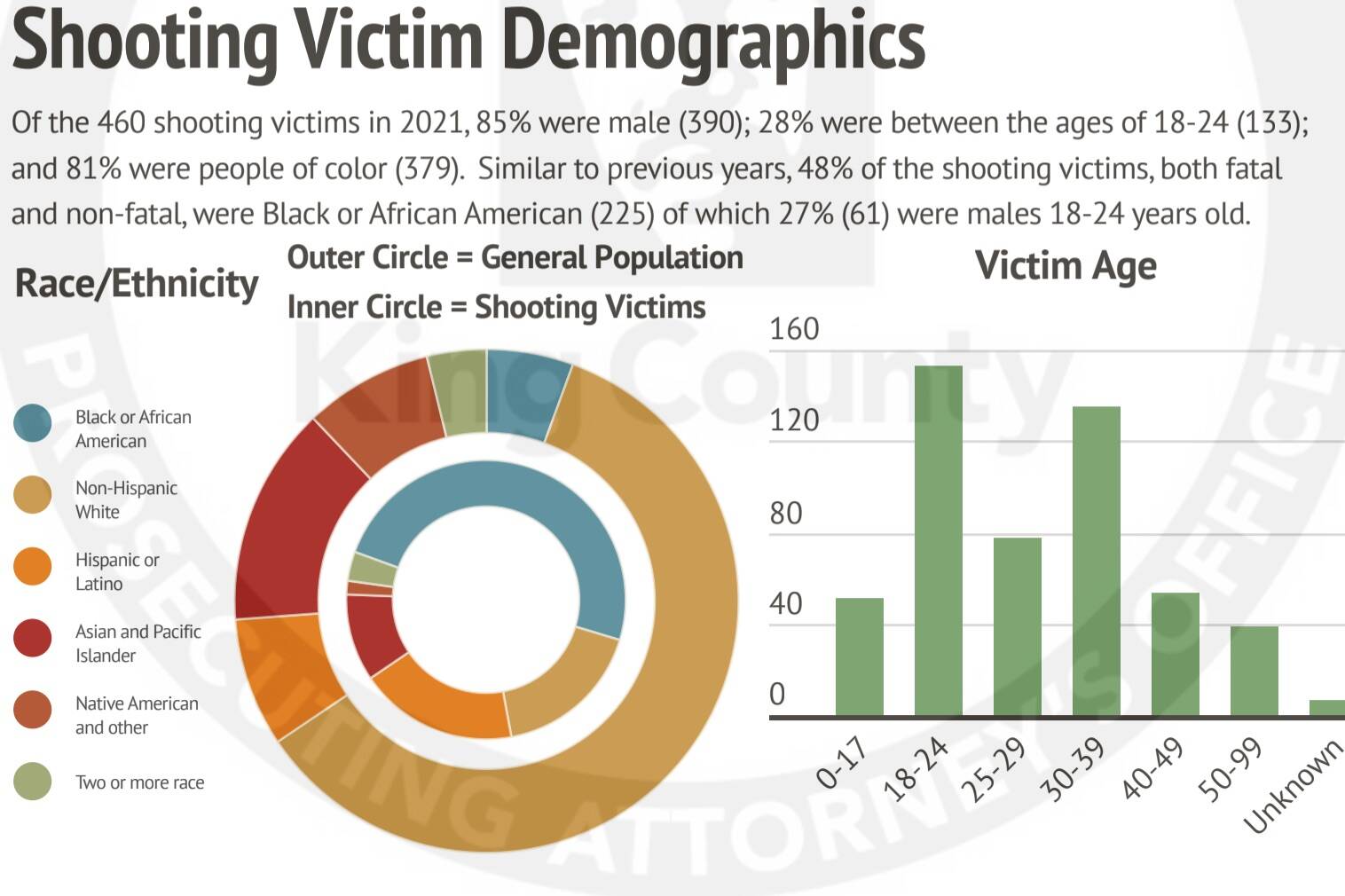After 2020 firearm violence statistics showed a record number of “shots fired” incidents in King County, the 2021 shots fired report from the King County Prosecuting Attorney’s Office showed another record-breaking year for gun violence in the region.
The 460 total victims of shooting during 2021 represents an increase of 70 percent compared to the four-year average between 2017 and 2020. King County Prosecuting Attorney Dan Satterberg said the data is “disturbing.”
In 2021, the county recorded 88 total people who were victimized by a fatal shooting, up 54 percent from the previous four-year average, along with 372 total non-fatal shooting victims — 102 more victims than the previous year.
There were 1,405 shots-fired incidents in King County in 2021, which is a 26 percent increase from the previous four-year average.
The report also identified that gun violence continues to disproportionately impact people of color and particularly young Black men. Of the 460 shooting victims in 2021, 81 percent of the shooting victims — or 379 people — were people of color. Nearly half (48 percent or 225 people) of all shooting victims were Black.
The King County Prosecuting Attorney’s Office report, put together by the Crime Strategies Unit, collects information from the 39 law enforcement agencies and puts together a mapping of the data across the region.
Satterberg said the 2021 annual report shows data from a full year of the pandemic, but may “raise more questions than it answers.”
Satterberg said the increasing trend of gun violence is not unique to King County, but rather a national trend that can be observed in both metropolitan and rural areas across the country. He suggested that the trend is related to the pandemic, but said the relationship is something “that should be studied.”
The prosecuting attorney said many of the gun violence incidents are related to road rage and instigated by “petty provocation,” but he also acknowledged that there is a relationship between poverty and violence because economic hardships may have been exacerbated during the pandemic.
With more than one-third of the shooting victims being under age 24, Satterberg suggested that young people who can legally own a gun may be acting impulsively with those firearms.
King County Councilmember Girmay Zahilay believes the trend is related to the ways in which other parts of our communities and society have been affected by the pandemic. He pointed to rising levels of anxiety, stress and anger compounded by understaffed agencies and services that have met their capacity. Other healthy community outlets such as recreation opportunities have been either reduced or put on hold.
Zahilay suggested work groups and coalitions between community members, community organizations and government agencies to help identify mitigation strategies.
Satterberg emphasized system-wide issues in the criminal justice system, which includes a lower number of cases brought forward by police departments as detectives are short staffed and overworked.
“There is no ‘solution’ to gun violence,” said Satterberg. “No community in America has solved it.”
Satterberg said that reports such as this one, which take a public health approach to understanding gun violence through data, help inform community investments and mitigation strategies.


